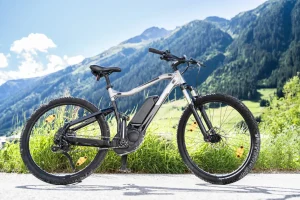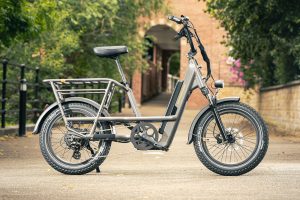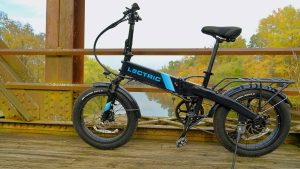Electric bikes, often referred to as e-bikes, have taken the world of cycling by storm. They offer an exciting and eco-friendly alternative to traditional bicycles, making them a preferred choice for commuters, outdoor enthusiasts, and eco-conscious individuals. In this comprehensive guide, we will explore the world of electric bikes, their various types, benefits, and how they compare to traditional bicycles.

Brief overview of electric bikes
Electric bikes, as the name suggests, are bicycles with an electric motor that assists pedaling. They have gained immense popularity due to their ability to make cycling more accessible and enjoyable.
The rising popularity of e-bikes
In recent years, electric bikes have gained immense popularity as people seek efficient and eco-friendly modes of transportation. This surge in interest can be attributed to the numerous advantages e-bikes offer.
Understanding Electric Bikes
What is an electric bike?
An electric bike is essentially a bicycle equipped with an electric motor and a rechargeable battery. This motor provides varying levels of assistance to the rider, making pedaling easier and extending the range.
Types of e-bikes
1. Electric commuter bikes
Designed for urban travel, electric commuter bikes offer a convenient and efficient way to navigate through city streets.
2. Electric mountain bikes
Electric mountain bikes are specially designed for off-road adventures, enabling riders to conquer challenging terrains with ease.
3. Pedal-assist bikes
Pedal-assist e-bikes provide assistance to riders only when they pedal, allowing for a more natural riding experience.
4. Electric bike conversion kits
Conversion kits can transform your existing bicycle into an electric bike, providing a cost-effective option for those who want to upgrade their current ride.
Advantages of electric bikes
Electric bikes come with a multitude of advantages, including reduced effort during rides, extended range, and the ability to tackle hills and headwinds effortlessly.
Electric Bike vs. Traditional Bike

A comparison of e-bikes and traditional bicycles
1. Speed and range
E-bikes can reach higher speeds and cover longer distances due to their electric assistance.
2. Environmental impact
Electric bikes produce fewer emissions and have a lower carbon footprint compared to traditional vehicles.
3. Cost of ownership
While e-bikes have an initial cost, they often prove to be cost-effective in the long run, especially for daily commuting.
Which is better for you?
Choosing between an electric bike and a traditional bicycle depends on your specific needs and preferences. It’s essential to consider factors like the terrain you’ll be riding on and your budget.
Choosing the Right Electric Bike
Factors to consider
1. Riding terrain and style
Select an e-bike that suits your typical riding terrain, whether it’s urban streets, mountain trails, or a mix of both.
2. Battery and motor types
The type of battery and motor in your e-bike will impact its performance and range.
3. Budget
Consider your budget and look for models that offer the best value for your money.
Top electric bike brands
We’ll explore some of the top electric bike manufacturers that consistently produce high-quality e-bikes.
Riding and Maintenance
Tips for riding an electric bike
Discover valuable tips to enhance your riding experience and make the most of your e-bike.
| Number | Tips |
|---|---|
| 1 | Always wear a certified helmet. |
| 2 | Learn and obey local traffic laws. |
| 3 | Start in a lower power-assist mode. |
| 4 | Gradually increase pedal assistance. |
| 5 | Be cautious on wet or slippery roads. |
| 6 | Keep both hands on the handlebars. |
| 7 | Use hand signals for turning. |
| 8 | Stay visible with lights and reflectors. |
| 9 | Regularly check tire pressure. |
| 10 | Don’t overload your e-bike. |
| 11 | Maintain a safe following distance. |
| 12 | Be aware of the battery range. |
| 13 | Avoid aggressive acceleration. |
| 14 | Plan routes with charging stations. |
| 15 | Stay focused and stay safe. |
Maintenance and care
1. Battery maintenance
Learn how to take care of your e-bike’s battery for longevity and optimal performance.
2. Cleaning and servicing
Proper maintenance and regular servicing will keep your electric bike in top shape.
Environmental Benefits of E-Bikes
Reducing carbon footprint
E-bikes play a crucial role in reducing carbon emissions and making our cities more eco-friendly.
Reducing traffic congestion
By opting for e-bikes, we can alleviate traffic congestion in our cities, contributing to a smoother commute for all.
Conclusion
In conclusion, electric bikes offer a fantastic alternative to traditional bicycles, with their electric assistance, improved speed, and eco-friendly benefits. By selecting the right e-bike and following maintenance and safety guidelines, you can enjoy the many advantages they offer.
FAQs
1. Are electric bikes eco-friendly?
Yes, electric bikes have a lower carbon footprint compared to traditional vehicles, making them an eco-friendly transportation option.
2. What is the average range of an electric bike on a single charge?
The range of an electric bike varies depending on factors like battery capacity and terrain, but it typically ranges from 20 to 80 miles.
3. Do I need a license to ride an electric bike?
In most places, you don’t need a license to ride an electric bike, but it’s essential to check your local regulations.
4. Can I convert my existing bicycle into an electric bike?
Yes, you can use electric bike conversion kits to transform your regular bike into an electric one.
5. How do I maintain the battery of my electric bike?
Proper battery maintenance includes charging it regularly and storing it in a cool, dry place when not in use to extend its lifespan.













